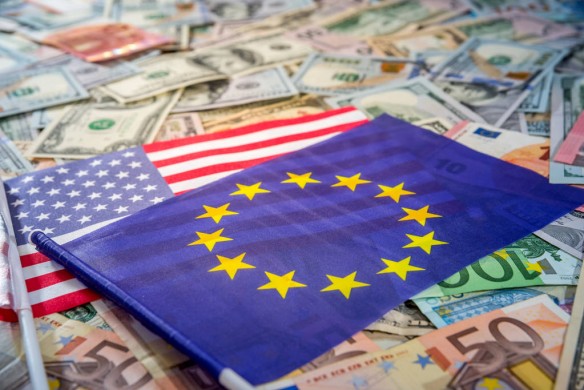Europe’s ongoing tug-of-war with foreign financial influence has reached a new phase as the European Systemic Risk Board (ESRB) pushes for a ban on multi-issuance stablecoins—digital assets issued across multiple jurisdictions but backed primarily by reserves in one country, often the United States.

The proposal, strongly supported by European Central Bank (ECB) President Christine Lagarde, marks another decisive step in the bloc’s broader campaign to safeguard monetary sovereignty and reduce dependence on the U.S. dollar in its digital economy.
A Sovereignty-Driven Crackdown
The ESRB’s proposal targets issuers like Circle (USDC) and Paxos (USDP), which back their tokens with U.S. reserves. It would ban offering identical tokens across jurisdictions while holding reserves in a single EU state, aiming to curb non-EU influence over European financial systems. Though not legally binding, the ESRB’s guidance—led by Lagarde and top EU officials—holds significant sway over future regulatory actions on foreign-issued stablecoins.
Lagarde’s Crusade for Monetary Independence
Lagarde has consistently warned that dollar-backed stablecoins threaten Europe’s financial autonomy by introducing liquidity and regulatory risks. Her stance aligns with the ECB’s vision of reducing dependence on U.S. capital flows, as most stablecoin reserves are held in U.S. assets—diverting European capital and undermining the EU’s Savings and Investment Union goals.

Source: create.vista.com
The Policy Context: GENIUS Act and Market Implications
Supporters of the ESRB proposal cite the GENIUS Act—which mandates stablecoin reserves in U.S. dollar assets—as proof that such models overly link Europe’s financial stability to the U.S. If enforced, the ESRB’s restrictions could significantly impact issuers like Circle and Paxos, forcing them to rethink their EU operations or risk exclusion from the market.
A Growing Rift in European Policy Circles
While the ECB and ESRB favor tighter controls, their stance may conflict with the European Commission’s earlier support for a more innovation-friendly framework. This underscores a policy divide within the EU—between preserving monetary sovereignty and fostering global competitiveness. Circle and Paxos have not commented publicly, though insiders say both are assessing the potential impact on their EU operations.
Conclusion: A Digital Power Play
The proposed stablecoin ban goes beyond policy—it’s a strategic move in Europe’s push for monetary independence. As the EU advances its digital euro, Lagarde’s message is clear: Europe intends to break free from U.S. dollar dominance, even in the digital space. If adopted, the ESRB’s guidance could reshape stablecoin operations and shift the global balance of digital financial power.
Learn from market wizards: Books to take your trading to the next level


 Hot Features
Hot Features












